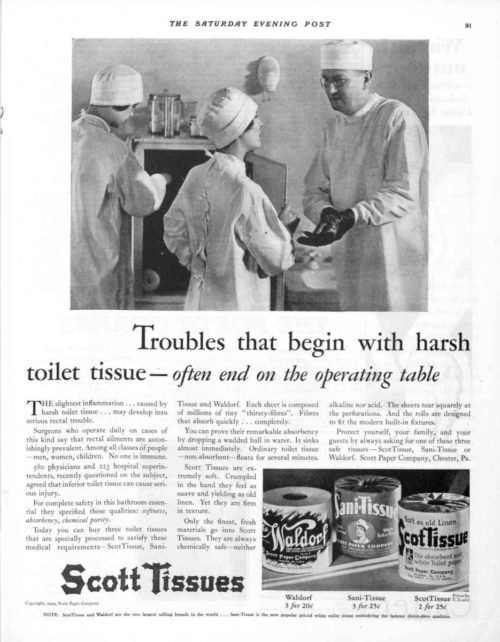Vintage Advertising: Scott Toilet Paper Goes Negative
Early ads for the Scott Paper Company’s toilet paper emphasized the paper’s texture, calling it “soft as old linen.” But in the late 1920s, a new series of ads warned consumers that using the wrong toilet paper could lead to “serious trouble,” possibly requiring surgery.

When the Scott brothers began putting toilet paper on a roll in 1879, they had just one competitor, Joseph Gayetty’s “Therapeutic Paper.” These were loose, flat sheets, treated with aloe and promoted as “the greatest necessity of the age.” But for decades, most people relied on whatever paper was handy. In outdoor privies across the country, they might reach for a Sears Roebuck catalogue, which was kept there for a purpose the mail-order company never anticipated.
Scott Tissue offered the convenience of a paper roll, but its ads focused on its purity. Alternatives, they said, were somehow linked to the “65 percent of middle-aged men and women [who] suffer from rectal disease.” And some brands were found to contain mercury and arsenic. As good as Scott Paper was, there was still room for improvement. It wasn’t until 1935 that the Northern brand could advertise a toilet paper that was “splinter free.”
This article is featured in the May/June 2020 issue of The Saturday Evening Post. Subscribe to the magazine for more art, inspiring stories, fiction, humor, and features from our archives.
Featured image: Shutterstock